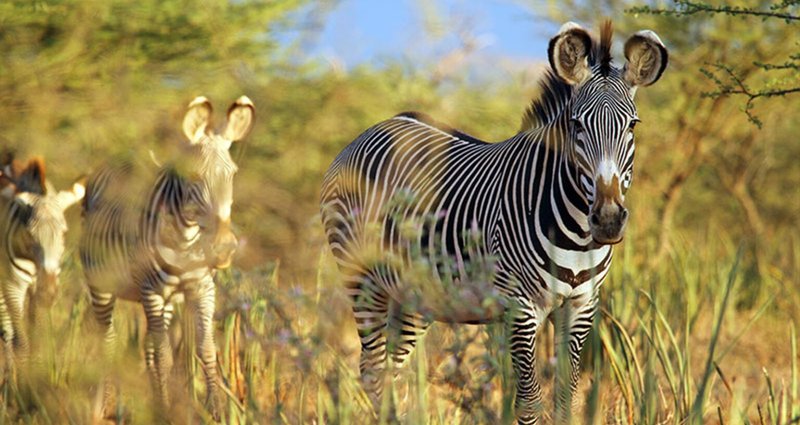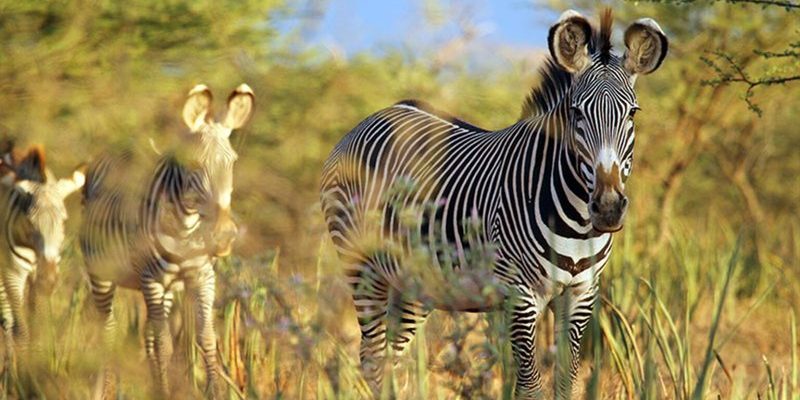
Raising a foal (that’s what baby zebras are called) isn’t just a walk in the park. For Grevy’s zebras, it involves navigating the hot savanna, finding food and water, and protecting their little ones from potential dangers. Let’s dive in and uncover the remarkable ways these zebras nurture and teach their young. You might find it’s not all that different from raising kids in the human world!
Understanding Grevy’s Zebras
Grevy’s zebras are primarily found in the dry regions of East Africa, particularly in Kenya and Ethiopia. Unlike their relative, the common zebra, Grevy’s have narrower stripes and large ears, making them stand out even more. They are social animals that live in small groups called harems, led by a dominant male.
These zebras mostly graze on grass and leaves, which sounds simple, but it turns into a challenge during dry seasons when food and water sources become scarce. Their ability to adapt to the harsh environments is truly impressive. Grevy’s zebras are also known for their strong maternal instincts, which are crucial when it comes to raising their young.
The Mating Process
Before a foal’s arrival, the mating process is quite intriguing. Male Grevy’s zebras engage in elaborate courtship displays to attract females. They might show off their strength by engaging in a show of dominance, often involving kicking and biting. Here’s the thing: it’s not just about getting the girl; it’s about ensuring the survival of the strongest genes.
After a successful mating, the female will carry her foal for about 12 months. This long gestation period ensures that the foal develops properly within the protective environment of its mother. Once the baby arrives, the real adventure begins.
Welcoming the New Foal
When a foal is born, the first few moments are critical. The mother will clean her newborn, helping it to stand and walk within an hour. Honestly, this is quite remarkable—imagine being born and having to get up and move so quickly! This swift action is vital for survival, as they need to join the herd and avoid predators like lions and hyenas.
Once on its feet, the foal learns quickly from its mother and the rest of the herd. The mother will often communicate with her foal using a series of soft whinnies, fostering a strong bond. This bond is essential for the well-being of the foal, as it needs to feel secure to grow up healthy.
Lessons in Survival
As the foal grows, it gets more practice in the ways of the wild. The mother teaches it essential skills like grazing and recognizing different types of danger. You might be wondering, how exactly does she do this? It’s all about observation and example. For instance, if the mother senses danger, she’ll display a specific behavior that signals her foal to be alert and ready to move.
Grevy’s zebras are also known for their social structures, which play a crucial role in raising young. Foals often interact with other zebras in the herd, learning behaviors from their peers too. This social learning is significant because it encourages the foals to develop proper social skills for their future.
Protection from Predators
In the wild, danger is always lurking around the corner. Grevy’s zebras face threats from various predators, including lions and crocodiles. The mother’s role extends beyond just teaching; she’s also a protector. When she senses danger, she can be fiercely defensive.
Zebras have a unique strategy to confuse predators. When a threat appears, they often graze in groups, making it harder for predators to focus on a single target. Their stripes also create an optical illusion, which can disorient attackers. It’s like camouflaging while still being incredibly visible—it’s a clever survival tactic.
The Role of the Herd
In many ways, raising a foal isn’t just the job of one mother; it involves the whole herd. The herd acts like a close-knit community, where everyone looks out for each other. If a mother zebra is busy grazing or has to nurse another foal, other members of the herd will keep an eye on her young one.
This communal care is vital. It allows mothers to share the responsibility of looking after the foals while also ensuring a higher chance of survival for all the young in the group. Honestly, it’s a lot like how human communities work together to raise children—there’s strength in numbers!
The Journey to Independence
As foals grow, the road to independence begins. By the time they’re around 1 to 2 years old, they learn how to fend for themselves. The mother starts to gradually reduce her care, encouraging her foal to explore and make its own way in the world. This process can be bittersweet; it’s like sending a kid off to college but in the wild!
During this time, the foal learns to adapt to various challenges, whether it’s finding food or navigating through the savanna. The lessons they learned in their early days become invaluable as they prepare to join other herds or even start their own.
Raising young in the wild is a remarkable journey for Grevy’s zebras, filled with lessons of survival, community, and independence. From the moment a foal is born, it’s a team effort. The love and protection of mother and herd members weave together to create a nurturing environment, ensuring that these beautiful animals continue to thrive in their natural habitat.
The next time you see a zebra, take a moment to appreciate the effort that goes into raising their young. Just like in our world, it’s not just about survival; it’s about building connections and preparing for the future. The stories of these majestic creatures remind us that nurturing and community are universal themes, transcending species.

